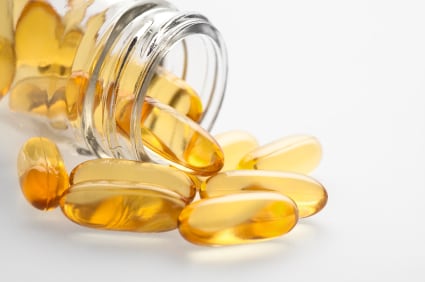Data collected over 19 years from 14,738 women indicated that the lowest average levels of alpha-tocopherol were associated with an 86% increase in the rate of hip fracture, while use of alpha-tocopherol-containing supplements were associated with a 22% reduction in the rate of hip fracture.
Similar protective effects from higher vitamin E levels were observed in men, according to data collected over 12 years in 1,138 men, report researchers from Uppsala University and the Karolinska Institutet in Sweden.
“Vitamin E has been proposed to have positive effects on both bone and muscle mass owing to its antioxidant properties, rendering a theoretical consequential lower fracture risk with a higher alpha-tocopherol intake,” wrote the researchers in the American Journal of Clinical Nutrition.
“Our results support these experimental findings: higher intakes were associated with higher BMD, higher lean muscle mass, and lower fracture risk. In addition, recent randomized trials have indicated that vitamin E and C supplements have a positive effect on BMD and muscle mass in elderly women and men.”
An overlooked nutrient
Vitamin E was recently described by Michael McBurney, PhD, director of scientific affairs for DSM Nutritional Products, North America, as an ‘overlooked nutrient’.
“Because pharmacological doses of vitamin E were not a magic bullet in preventing cancer and cardiovascular disease, scientists and health professionals have dismissed vitamin E as a nutrient of interest,” he said.

“This is unfortunate for two reasons,” he added. “Firstly, those randomized controlled trials were conducted at a time when most people were supplementing with vitamin E and the intake of polyunsaturated fatty acids was much lower, and, secondly, vitamin E intakes have fallen since 2006.”
Indeed, data from longitudinal studies shows that the prevalence of vitamin E supplementation has fallen from 44.3% in 2002 to 19.8% in 2006.
“Like dietary fiber, calcium, vitamin D, and potassium, the 2010 Dietary Guidelines of America should have declared vitamin E as a ‘nutrient of concern’ because ‘What We Eat in America’ finds that over 90% of Americans are not consuming the Vitamin E RDA. And the situation is worsening.”
The vitamin E family
There are eight forms of vitamin E: Four tocopherols (alpha, beta, gamma, delta) and four tocotrienols (alpha, beta, gamma, delta).
The majority of the science in the past has looked at vitamin E in the alpha-tocopherol form in the context of cardiovascular disease, cancer, and eye disease.
Study details
The new data from Sweden supports the potential bone and muscle health benefits of the vitamin. Led by Karl Michaelsson, the researchers used data from two independent cohort studies: The Swedish Mammography Cohort and the Uppsala Longitudinal Study of Adult Men.
Data from the women indicated that the lowest average levels of alpha-tocopherol were associated with an 86% and a 20% increase in the rate of hip and any fracture, respectively.
The use of supplements containing the vitamin were associated with a 22% and 14% reduction in the rate of hip and any fracture, respectively.
For the men, low levels of alpha-tocopherol more than tripled the rate of hip fracture. No data was available for supplement use with only 4% of the men said they used any type of supplement, but these users did have higher blood levels of alpha-tocopherol, compared to non-users.
“The consumption of alpha-tocopherol is low in Sweden and other Scandinavian countries,” wrote the researchers. “Only about 10% of the women in the SMC and 5% of the men in ULSAM had an intake higher than the Swedish recommended intakes (8 and 10 mg/d for women and men, respectively). The highest incidences of osteoporotic fractures worldwide are also found in Scandinavia—an observation that cannot readily be explained by known lifestyle or genetic determinants, climate, or longevity.”
“Additional studies are warranted to confirm our novel discoveries and ultimately randomized clinical trials that evaluate the effect on fracture risk of low doses (daily recommended intake) of vitamin E.”
Source: American Journal of Clinical Nutrition
2014, Volume 99, Pages 107-114; doi:10.3945/ajcn.113.064691
“Intake and serum concentrations of α-tocopherol in relation to fractures in elderly women and men: 2 cohort studies”
Authors: K. Michaelsson, A. Wolk, L. Byberg, J. Arnlov, H. Melhus
